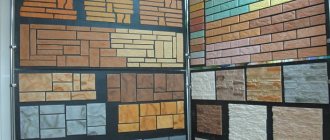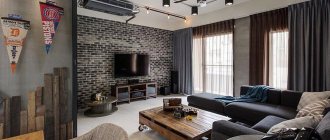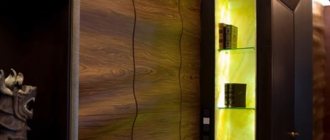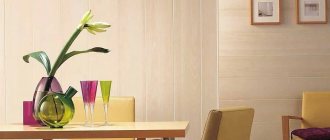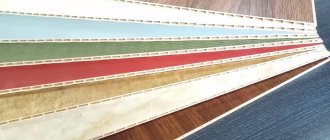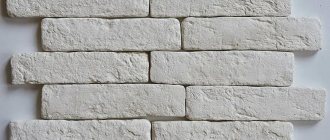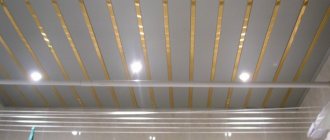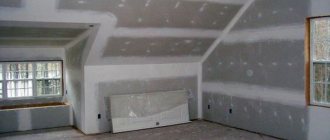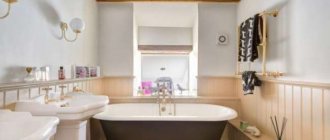Published on October 29, 2018 by Stroitel
Decorating walls with stone has long been popular for facade work. Although this design looks great indoors too.
Today, when manufacturers offer a wide selection of panels imitating natural or artificial stone, everyone can afford such interior design.
Stone-look wall panels can be made using different technologies:
- These can be ordinary PVC panels with a relief pattern imitating sandstone, granite, brick and other materials. The cheapest option, but the quality is low - the plastic is too light and fragile.
- Much stronger than fiberglass products. Mineral fibers in the structure of the material prevent the formation of cracks, and do not interfere with the production of products with a wide variety of relief.
However, the problem of the release of toxic substances when heated remains.
- There are relief panels made of MDF. The most popular models here are from the American manufacturer DPI, which makes high-quality models based on eucalyptus fibers.
This variety is strong, durable, and pleasant to the touch. At the same time, it is quite affordable in price and easy to install.
- Panels with thin pieces of stone glued on can hardly be called imitation. This is the most expensive option; heavy panels require solid fastening. But strength and durability are also maximum.
Using MDF or other types of panels to decorate a room, a separate wall, or even just a fragment of a wall creates many advantages. An element of monumentality, solidity, durability, and thoroughness appears in the design.
At the same time, imitation stone has many advantages over real stone. Due to their low weight, the products practically do not create additional load on the load-bearing elements of the building.
There is no need to calculate the strength of the structure, strengthen it, and there is no need to coordinate such a design with regulatory authorities. Light weight simplifies transportation, unloading, storage, and installation.
The finishing speed increases significantly; all work can be completed in a couple of days, even without solid experience in this field. You can combine different types of designs.
For example, buy wood-look wall panels and combine them with stone finishes, while the preparatory work and tools will be the same.
Mounting options
The method of fixing the panels to the wall depends on the type of material chosen. If you have decided to buy the most popular MDF products, then they can be mounted in two ways:
- using glue;
- using a metal or wooden frame.
The first method is much faster and cheaper, but its implementation requires perfectly smooth, well-prepared walls.
If the surface on which you plan to mount MDF is characterized by an abundance of cracks, bulges, pits, if it is contaminated with remnants of the old finish, then it will most likely be cheaper and easier to use a frame than to bring the wall to the proper condition.
The installation of panels with glue is very simple and literally anyone can do it. You must adhere to the following sequence:
- Many types of materials require that they be kept for a couple of days in the room where they will be installed to adapt to the temperature and humidity of the room.
A clean, flat wall surface is primed in accordance with the instructions for the adhesive.- Glue is applied. Some varieties need to be applied to both the wall and the panels, others can only be applied to the panels.
- The panel is applied to the wall and pressed well.
- The procedure is repeated with the next fragment.
- When the entire wall is finished, decorative elements are installed below, above, and at the corners.
Stone imitation often requires very precise matching of patterns on adjacent panels. It's better to spend a little more time than to have to redo everything. When finishing a bathroom or kitchen, it is highly advisable to use moisture-resistant materials.
If you are decorating a place where high temperatures are likely - an apron in the kitchen or the walls of a fireplace, then you should not use fire-hazardous plastic; in this case, it is better to buy MDF.
Installation of panels using a frame is in many ways similar to finishing rooms with plasterboard or plastic. The preparatory work is practically the same.
Watch our video collection on the topic:
Mounting options
Wall panels in the interior
The method of fixing the panel directly depends on the original finish of the wall. So the following options are the most optimal.
Using liquid nails
This type of installation is particularly simple, inexpensive materials and quick installation time. But in this case, the wall must be perfectly flat; significant cracks and bulges are not allowed. Pre-laying the soundproofing or thermal insulation coating will not work.
Installation of wall panels using liquid nails
Installing panels using liquid nails requires a marker, tape measure, level, jigsaw and the liquid nails themselves. After adjusting the panels to the desired wall size, liquid nails are applied to the working surface of the panel either in a small thin layer with broken lines no more than 10 cm, or using the dot method. The panel is pressed tightly against the base of the wall and held lightly for up to a minute. Complete drying occurs within several days, depending on the manufacturer of liquid nails. The joints of wall panels can be decorated with plastic skirting boards, which are glued in the same way.
Installation of wall panels with glue
Frame based on wooden or metal slats
In this case, a small gap remains between the wall and the future panel, which can be filled with rolled substrates of the required thickness. Installation of the frame requires time and additional material and tools. The frame perfectly hides uneven walls, cracks, bulges and holes.
When installing sheet panels with different textures, it is worth pre-selecting a pattern in order to maintain the uniform integrity of the surface, imitating natural stone.
Panels for wall decoration with the effect of natural stone solve many complex problems, making it possible to save not only time, but also money. When considering the model range, you should pay attention not only to the appearance of the material, but also to the quality, so that the product meets the properties declared by the manufacturer. Therefore, it is better to give preference to proven brands that have rightfully earned people's respect.
Features of the panels of the American company
DPI products are especially popular among our consumers and deservedly so. This company has been in the decorative panels market for more than 50 years, it has large production capacities, a large staff of researchers and engineers, and a wide dealer network.
DPI products are distinguished by their special composition and production method. When creating them, waste from processing eucalyptus wood is used. This material contains a small amount of oils that have bactericidal and insecticidal properties, due to which products rot much more slowly even in damp conditions, and also drive away harmful insects.
At DPI factories, panels are produced by hot pressing, using lignin present in the wood as an adhesive.
Thus, MDF from this manufacturer does not contain formaldehyde-emitting resins at all, and is therefore suitable even for children's rooms and bedrooms.
DPI offers wall panels in wood, tile, stone and other varieties. In terms of ease of processing and durability, this material is not inferior to conventional MDF, and in some respects it even surpasses it.
Having decided to buy DPI panels for finishing a bathroom or bathhouse, you should plan to install the products with glue, because the use of a frame involves the use of self-tapping screws and nails, which will damage the protective melamine film.
This will reduce the service life of products in humid environments. Also, you cannot use screws and nails when installing panels with a thickness of less than 5 mm.
Types of materials and their combination
For interior decoration, artificial slabs are most often used , since a number of the existing variety of natural stones are mainly composed of “cold” rocks (what is the composition of decorative stone?). And for the room it is important that the finishing not only looks good, but also protects the surface from the adverse effects of moisture, dirt, mechanical damage, creates a suitable microclimate, and maintains the desired temperature.
When choosing material for cladding, the desired effect and style of the room itself are taken into account. The easiest way to create it is with special types of material or imitation of their texture:
- Eco-style rooms are finished with slate stones.
- To recreate a loft and urban motifs, classic brickwork and clinker tiles are used.
- Finishing in terracotta, light beige, ocher, milky tones emphasizes the decoration of the Provence style.
- Country or rustic motifs are well imitated by irregularly shaped fragments with a roughly finished surface in gray tones.
In addition to the use of decorative stone elements, a combination of such finishing with other types of decorative coating is often performed:
- roll materials;
- plaster;
- painting.
Covering one wall of a room or area with stone tiles or bricks, the corners of the room create an unusual visual effect and zone the space.
Attention
Regardless of the materials chosen, you need to adhere to the color combination of the cladding so as not to create the impression of an unfinished renovation or an “alien” coating in the overall picture of the interior.
To decorate small rooms, kitchens and hallways, as well as bathrooms, light-colored stones are most often used, which additionally visually slightly expands the space. Such rocks include sandstone, granite, pebbles, marble imitations, which are combined with other finishing materials of similar colors.
Spacious rooms look good with patterns on the wall made from dark fragments . It is better to use the method of placing emphasis, for example, on:
- bar counter;
- kitchen apron;
- one of the walls of the room;
- corners.
It is necessary to select multi-zone lamps for the “correct” illumination of dark fragments.
Due to the combination of dissimilar and multi-colored decorative stones, a unique interior style is formed. Even with traditional finishes: ceramic tiles, panels, wood, painted surfaces, decorative plaster and wallpaper, most decorative stones combine well.
For the living room
These rooms are often equipped with working or “fake” fireplaces, which create the necessary coziness and comfort. Depending on the design style, the finishing of this element in the interior can be done in different species. Masonry made from clinker or brick-imitating tiles is suitable for minimalism and loft . The outer part of the fireplace, the portal, and the walls around the structure can be finished.
To emphasize the classic atmosphere, imitation marble and gypsum tiles are suitable. The latter can be created independently, and with imitation of the desired texture, color, and additional decorative qualities. The use of paints and varnishes is allowed if they have fire-fighting properties, otherwise such finishing will be unacceptable.
Recreating chalet or country styles is achieved by using granite or sandstone sections. Natural materials, in addition to decorative qualities, will provide the necessary warmth in the room.
Important
In the living room, it is best not to cover all the walls with decorative stone, as this will make the room look more like a crypt or basement. A drawing on a separate wall from a combination of several sizes, shapes, colors, and types of decorative stone looks good.
You will find more information about decorating living room walls with decorative stone in our article.
For kitchen
In this room, it is best to create masonry only on the apron, table elements or on the bar counter, in the corners or areas of the opposite open wall. In order for the beauty of the created picture to be clearly visible, it must be made from such rocks that will emphasize the style and will contrast in color and texture with the rest of the wall decoration.
Due to the high price of the material itself and its installation, natural stone is less common in kitchen decoration than its artificial counterpart. Popular breeds for the kitchen :
- marble with noble veins and color saturation;
- luxurious granite slabs that create the feeling of a solid stone surface;
- warm yellowish, reddish shades of sandstone;
- river stone preserving its natural shape and appearance;
- strict relief of slate.
An alternative for natural decorative finishing of the room is other materials that are made by man:
- durable, fireproof, waterproof porcelain tiles;
- conglomerates of limestone, quartz sand, minerals, feldspar, marble or granite chips;
- flexible stones with imitation of different textures;
- acrylic stones, which are available in many shades and textures.
Advice
The strength and durability of artificial material is slightly lower than that of natural material. In places where high humidity or direct contact with water is expected, gypsum is not used.
Tips for finishing with decorative stone in the kitchen and hallway can be found here.
For the bedroom
Unlike the kitchen and bathroom, the cladding in the bedroom can be made of plaster, and no additional paint coating is required to protect it from moisture. The tiles are covered with various decorative substances that recreate the imitation of various natural stones, protecting fragile gypsum surfaces from abrasion and mechanical damage.
Various substances are used for grouting joints, which are selected according to the following principles:
- darker by a tone or several shades from the main color of the materials;
- several tones lighter than the entire masonry;
- support of the selected color, visual hiding of seams.
Depending on the size and shape of the decorative stone fragments, the width of the seams between the tiles can be from 3 mm to 1.5 cm. Otherwise, such a picture will not look good. The use of river stone and other natural materials, such as onyx or marble, allows for seamless masonry. In this case, you need to observe the general pattern and texture. To make this easier, all elements must first be laid out on the floor, creating the required area for future masonry.
If the stone finish should be the background, then the seams are made darker . For a decorative panel or a more complex pattern, the filling of the seams should be lighter so as not to create breaks in the picture. If the seams are depressed, then with the help of shadow and proper lighting they can slightly change the appearance of a painting made of decorative material. Therefore, making the color of the seams in the same tone as the main fabric is the most effective solution.
Attention
If the masonry is done in the form of a “wild stone”, a pressed-in monochromatic joint between the tiles will help to emphasize the complex texture of the cladding.
For the bathroom
It is necessary to take into account the peculiarities of the operation of the premises. The material must have high strength and good hydrophobic properties. Therefore, the use of gypsum elements is possible when their surface is treated with a deep penetration primer and coated with yacht varnish. This decision is made at your own peril and risk. It is recommended to use natural stones or those based on acrylic and polyester resins .
The conditions in the bathroom for finishing are extreme, so the choice of material should be based on its qualities, characteristics, and only then on texture and color.
The size of the room must be taken into account. If the bathroom is cramped and small, then completely finishing all the walls with decorative stone elements is not recommended. This will visually create the impression of an even tighter space. It is best to use the method of placing accents in a small bathroom by finishing the most “wet” places. For example, stonework will look good:
- around the washbasin;
- on the walls bordering the bathroom;
- near urinals, bidets, toilets (in the case of adjacent bathrooms).
In large, spacious bathrooms, large fragments are used for masonry . Antique motifs in the form of sculptural or relief inserts, columns with capitals will look good.
Cost of materials and labor
Costs depend on the area of the surface being decorated, as well as what type of material you decide to buy. Panels from the American company DPI will cost approximately 2000-2500 rubles for one sheet measuring 122x244 cm.
For the work you will have to pay from 200 rubles per square meter or more, it all depends on the level of complexity of the task and the initial state of the surface.
Watch our video selection on wall decoration:
Today, natural materials are becoming popular, making it possible to create surprisingly warm and homely interiors. Their cost is so high that not every one of us can afford to use them during repairs. Manufacturers, taking into account this drawback, have offered potential buyers a wonderful alternative. It can be used as decorative stone panels for interior decoration. What kind of material is this? What advantages does it have? Is installation difficult? The answers are in this article.
Types of finishing panels
Types of stone panels
Based on their shape, three types of decorative stone wall cladding can be distinguished:
- Sheets are characterized by the largest dimensions. The length of such products made of PVC or MDF reaches 2440 mm with a width of 1220 mm, while their thickness can be 6 mm.
- The slabs are square in shape, and their standard dimensions are most often 300x300 mm or 980x980 mm.
- Slats (lamellas) are stacked plastic elements, width from 900 to 3000 mm and length from 130 to 300 mm. The thickness of the material can vary from 8 to 12 mm.
Varieties of decorative stone panels
In fact, the building materials market offers a wide range that helps replace natural stone. Its use is increasingly being abandoned not only because of its high cost. It is quite difficult to work with it; additional specialized equipment must be used for processing and installation. In addition, natural stone has a lot of weight. For this reason, it cannot be used for finishing walls in residential apartments located in apartment buildings: too much load is placed on the floors.
Almost all of these shortcomings are free from stone-look panels intended for interior wall decoration. They can be made from different materials, they can be presented in different forms. Manufacturers offer:
- Sheet modules for interior decoration. They are more than one meter wide and more than two meters long. Designers use this material when it is necessary to decorate a room with a large area.
- Tile materials are presented in the form of square-shaped modules. This material is easiest to use when renovating a city apartment.
- Stone slatted panels have the shape of slats of different sizes in length and thickness. They are most often used for finishing bathrooms.
In addition, in appearance, the varieties of the described material can also differ significantly from each other. They are able to reproduce various decorative effects. For example, “ragged limestone” helps imitate natural limestone masonry. This material is often used for interior decoration of individual decorative elements (arches, columns or fireplaces).
“Mountain slate”, “Jurassic stone” - it is impossible to list all the names. The collections present a wide variety of designs, each with its own realistic colorful relief, so the shape of the stones, their color, size - everything can be different.
Types of stone for decoration
Natural stone has been widely used for construction and decoration of buildings since ancient times. It is extracted in quarries, then, after special processing, the material is ready for construction and design work. Its main advantages are ease of use and durability. However, natural minerals are not cheap and require special equipment for installation.
Natural wood gives a homey look to the room. As a rule, they use mineral formations that are suitable for finishing the house inside and outside.
As an alternative to natural specimens, manufacturers produce non-natural ones made from plywood or concrete. Such false stones, in comparison with natural stone, have a significantly lower price.
Limestone as a decorative element
This rock has a non-solid structure and therefore wears out over time. It has a structure with large pores, which creates the effect of blurring with water. This finishing material will decorate the interior of the home and the facade of the building.
Thin stone for cladding
This type of decor looks like thin rectangles from 24 to 32 millimeters thick. The natural stone at the base of the tiles does not look heavy and is inexpensive. Another advantage of tiled cladding is that it is much easier to install than blocks, but it looks like finishing with large elements.
Smooth pebbles
River pebbles are rocks that are shaped and shaped to a smooth surface by strong river currents. Pebbles are used in the decoration of fireplaces, building exteriors, and landscape design of gardens. This stone is often used in kitchen interiors to create a backsplash on the walls or decorate the floor.
What are they made from?
Modern wall panels intended for finishing interior walls can be made from different materials.
Fiberglass modules are a very durable and lightweight material, which is manufactured using the following technology: first, a pressing mold is made from natural stone, it is filled with liquid plastic and reinforced with fiberglass for strength. The front layer is then painted with dyes. The result is a material that is very similar in appearance to its natural prototype. In this way, panels are made for finishing interior walls with imitation of almost all existing natural stones used for finishing. An important distinguishing feature of this option is durability and low price.
MDF stone panels are a decorative material that is often used to decorate interior walls. Made from wood chips, they are compressed under high pressure. A design is applied to the front layer using printing, which is then protected by lamination. The use of such panels becomes justified when it is necessary to additionally protect the room from heat loss or noise penetration.
Stone panels made from chipboard or fiberboard have similar characteristics to materials made from MDF, but have a lower price.
Decorative stone in the hallway
Finishing with decorative stone will decorate even a small and cramped hallway. It will immediately look more comfortable and elegant, especially in light colors.
The stone decoration will be complemented by forged elements, lantern lamps, mirrors in massive antique frames.
Turquoise color in the interior: 100 photos and design ideas
General characteristics
The characteristics of stone-look wall stones easily translate into their performance benefits.
- They are durable.
- Environmentally friendly.
- Easy to clean (stone panels can be washed with water).
- They do not fade when exposed to direct sunlight.
- Almost all stone panels are made from durable and at the same time lightweight materials, so there is no additional load on the walls and other floors.
- It is quite simple to lay panels under stone on the walls, and then dismantle them yourself. What is important is that after dismantling, you can reuse the material for wall decoration.
- Mold never settles on the surface of the composite, and fungi do not grow on it.
- Stone panels do not rot, they are not afraid of moisture, so the material described can be used in the decoration of kitchens and bathrooms.
- The described material does not burn in fire, it does not support combustion, and during a fire, panels under the stone will not emit dangerous toxic substances (like plastic).
- Wall sheets are not afraid of sudden temperature changes.
- With the help of sheets it is quite easy to hide existing communications and uneven walls. When using frame cladding, you can additionally insulate the walls and provide effective sound insulation.
- Anyone can install them, even those who do not have construction experience. No special tools are needed for this.
Laying decorative stone
Covering surfaces with decorative stone is almost no different from laying tiles. You will need cement mortar or glue, a level, and spatulas. The stone is laid only on a flat base. To do this, use plaster or drywall. Large differences in level will help to hide the profile design.
Seal all seams and joints. Apply several layers of plaster, sand each of them with sandpaper. Clean the surface from dust, use a primer or primer to improve adhesion.
Apply a small layer of the adhesive mixture directly to the surface and leave for a few seconds. Apply another thin layer of mortar to the inside of the stone slab. Lay the stone on the base - the slabs are laid closely, with cross dividers.
After the mixture has set, seal the seams and minor defects with decorative putty. To add shine to the surface of the decorative stone, use a special varnish.
Possible installation options
As noted above, installation of wall panels under stone is quite simple. But in order for the final result to meet expectations, it is necessary to follow certain rules and complete all stages of installation in a certain sequence.
There are two methods that can be taken into account by all those who want to independently reproduce the installation of wall panels under the stone.
The first method involves the use of adhesives. This option is considered only in one case - when the walls are initially flat and do not have significant differences in height. Silicone or acrylic adhesives are used as adhesives. There are stone-look panels on sale today that have a self-adhesive back surface.
The second method involves creating a frame. It can be made from wooden beams or from metal profiles intended for installation of plasterboard structures. Whatever material is used, the method of constructing the grille is the same: first, the guide is attached to the floor, then to the ceiling. After this, the sides are attached to the guides. The pitch between the sidewalls should correspond to the dimensions of the stone wall panels.
Creating such a frame helps to form an air gap between the wall and the finishing layer. It can be filled with anything: thermal insulation, sound insulation. It is easy to hide any communications in it. This is very convenient when creating luxury renovations. Attaching stone-like panels to such a sheathing is quite simple. They are applied to the guides and fastened to them with self-tapping screws or metal brackets. In order to decorate the upper section of the joint with the ceiling, it is covered with decorative molding. The lower one is decorated with a plinth. This is what might happen in the end. The installation principle is clearly shown in the video posted at the end of the article.
Note! Some stone-look wall panels have a tongue-and-groove fastening system. It significantly simplifies the installation process and also helps create seamless surfaces.
What do we choose from?
Imitation stone in the interior looks natural and not hackneyed. Originally laid out corners, door and window openings, frames for panels create an extraordinary aura and allow you to complement the chosen style favorably.
However, not all artificial stone is created equal. It can be made from materials based on:
- concrete;
- acrylic;
- porcelain stoneware;
- quartz;
- gypsum.
Although they are all recommended for interior use, the physical characteristics vary. Having decided to use it in the interior of a particular room, you need to make the right choice, prepare it accordingly and attach it correctly.
Bathroom interior
Artificial stone that imitates ceramic tiles looks warmer and more textured. With its help, you can lay out the floor, walls, built-in shelves and racks in the bathroom. Mirrors built into “stone” walls look original and pretentious. And splashes from the bathroom stall are not dangerous for a coating made of acrylic or porcelain stoneware. It is better not to use gypsum materials, since the damp conditions of the room can be harmful to them.
Artificial stone in bathroom design elements Source howt.club
Using the rich color palette of the proposed decorative stone for the bathroom, you can create a competent ensemble: bathtub-washbasin-shelf-cabinet for linen. The combination of stone walls with a floor lined with Metlakh tiles looks organic.
About the kitchen
You can choose the right design for your kitchen walls using artificial decorative stone. Design solutions often contain such areas around the dining table, stove, and refrigerator. The compositions are original, in which the floor, ceiling, and walls have something in common. Such interiors are complemented by characteristic electrical appliances and household trinkets.
Kitchen interior finished with artificial decorative stone Source ultimatebadbackstrategies.com
If space allows, niches for refrigerators and dishwashers are laid out of decorative stone, and exhaust hoods are selected and installed in such a way that they look like a continuation of the stone element, for example, a metal rain canopy.
For areas near the stoves, a material with increased heat resistance is selected, and the space around the windows is expanded with plaster overlays, similar to shutters.
The stone inserts on the walls are naturally combined with the countertops of cutting and dining tables, made of materials similar in color and texture. For those who are not limited in funds and choose a natural stone surface for countertops, artificial imitations of stones on the walls will also not hurt.
The hallway is a suitable place for this design.
The front door, hallway walls and vestibule furnishings will most organically incorporate artificial stone decorations. Here it does not require framing or softening. Its natural appearance is an illusion of space and independence.
It makes sense to combine it with metal door handles, mirror frames, shoe shelves or key hooks.
Decorative stone for the hallway Source ok.ru
It is logical that the decorative facing stone in the hallway needs special lighting. Typically LED lights are used, which are located at the top and bottom of the frame. This gives the stone mystery, solidity, and sophistication.
The hall is a place for relaxation and communication
Decorating the walls of the hall in a “stone” style is an extraordinary and original solution. It depends on what material is chosen:
- interior lighting (some intensely absorb natural light);
- visual height of the room;
- amount of free space.
It is important to lay a decorative stone on the wall with a fireplace or place an aquarium with fish next to it. Climbing plants are also suitable - something like ivy creeping up a rock. For those who do not have a good relationship with living nature, you can choose special facing slabs with a green pattern applied, and a full-fledged fireplace can be replaced with its image on canvas.
Another option for a joint composition is a stone wall with a fireplace Source bloggang.com
It is beneficial to use stone coverings on walls that serve as partitions and divide the room into parts.
Using materials of various textures and colors, with the help of design techniques you can emphasize some interior details or make some defects invisible.
In rooms where the walls are decorated with decorative stone, soft leather furniture, long-pile carpets on the floor and soft drapery on the windows look organic. However, the choice of design details is determined by the chosen style of the room.
See also: Catalog of companies that specialize in the design and construction of country houses.
